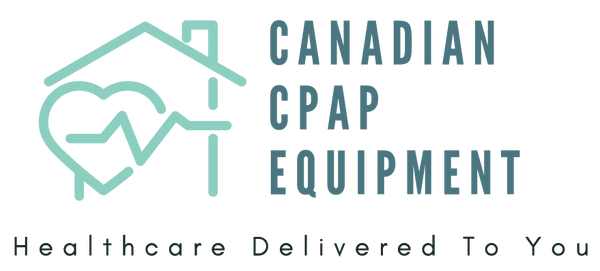When we think of sleep apnea, our minds often picture adults, perhaps an older individual who snores loudly. However, sleep apnea is not exclusively an adult condition; it can affect children of all ages, from infants to teenagers. While the underlying mechanisms are similar to adults, the signs, symptoms, and even the causes of sleep apnea in children can differ, making diagnosis challenging. Early recognition is essential for managing childhood sleep disorders. Parents who notice persistent snoring or breathing pauses during sleep can schedule a home sleep apnea test to detect potential sleep-related breathing issues conveniently and accurately.
What Causes Sleep Apnea in Children?
Unlike adults where obesity is a primary risk factor for OSA, in children, the most common cause of Obstructive Sleep Apnea (OSA) is enlarged tonsils and adenoids. These lymphatic tissues, located at the back of the throat and nasal cavity respectively, can become inflamed or simply be large enough to obstruct the airway during sleep. Other causes can include:
-
Obesity: While less common as a primary cause than in adults, childhood obesity is an increasing risk factor.
-
Craniofacial Abnormalities: Certain genetic syndromes or structural differences in the face and skull (e.g., Down syndrome, Pierre Robin sequence) can predispose children to sleep apnea.
-
Neuromuscular Disorders: Conditions that affect muscle tone can lead to airway collapse.
-
Allergies and Chronic Nasal Congestion: Can contribute to upper airway obstruction.
- Recognizing the Signs and Symptoms in Children
Children with sleep apnea may not present with the classic loud snoring and excessive daytime sleepiness seen in adults. Their symptoms can be more subtle and often manifest as behavioral or developmental issues, making it easy to misattribute them to other causes. Here are common signs and symptoms to look out for:
During Sleep:
-
Snoring: While not all children with sleep apnea snore, loud and habitual snoring (snoring every night) is a significant red flag. It may be accompanied by pauses in breathing, gasping, or choking sounds.
-
Restless Sleep: Frequent tossing and turning, unusual sleep positions (e.g., hyperextending the neck), or sleeping with the mouth open.
-
Sweating Excessively: Especially around the head and neck during sleep.
-
Bedwetting (Enuresis): New onset or recurrence of bedwetting, particularly in older children.
-
Night Terrors or Sleepwalking: Can sometimes be associated with fragmented sleep.
-
Paradoxical Breathing: The chest sinks in while the abdomen expands during inhalation, indicating increased effort to breathe.
During Waking Hours:
- Daytime Sleepiness: While some children may be overtly sleepy, others might appear hyperactive, irritable, or have difficulty concentrating (often misdiagnosed as ADHD).
-
Behavioral Problems: Irritability, aggression, hyperactivity, and difficulty managing emotions.
-
Learning Difficulties: Poor school performance, difficulty focusing, and memory problems.
-
Morning Headaches: Waking up with a headache.
-
Nasal Congestion/Mouth Breathing: Chronic mouth breathing, even when awake, can be a sign of upper airway obstruction.
-
Slow Growth or Weight Gain: In severe cases, the increased energy expenditure from struggling to breathe can affect growth.
Diagnosis of Sleep Apnea in Children
If you suspect your child has sleep apnea, it's crucial to consult with your pediatrician. They may refer you to a pediatric sleep specialist or an ENT (Ear, Nose, and Throat) specialist.
-
Clinical Evaluation: The doctor will take a detailed medical history, including sleep habits, symptoms, and a physical examination of the child's airway.
-
Polysomnography (PSG): The gold standard for diagnosing sleep apnea in children is an overnight sleep study conducted in a sleep lab. This comprehensive test monitors brain waves, breathing, heart rate, oxygen levels, and muscle activity to identify and characterize sleep-disordered breathing events.
-
At-Home Sleep Apnea Test (HSATs): While HSAT are widely used for adults, their use in children is more limited and typically reserved for older children or specific circumstances, as pediatric sleep studies often require more comprehensive monitoring to capture the nuances of childhood sleep disorders.
Treatment for Pediatric Sleep Apnea
The treatment for sleep apnea in children depends on the underlying cause and severity:
-
Adenotonsillectomy: For most children with OSA caused by enlarged tonsils and adenoids, surgical removal of these tissues is highly effective and often curative.
-
Weight Management: For obese children, weight loss can significantly improve symptoms.
-
CPAP Therapy: In some cases, particularly for older children or those for whom surgery is not an option or not effective, CPAP therapy may be prescribed.
-
Orthodontic Interventions: For children with craniofacial abnormalities, orthodontic devices may help expand the airway.
- Allergy Management: Treating underlying allergies can reduce nasal congestion and improve breathing.
Early diagnosis and treatment of sleep apnea in children are vital. Untreated sleep apnea can lead to long-term consequences, including cardiovascular problems, growth delays, and persistent behavioral and learning difficulties. If you have any concerns about your child's sleep or breathing, do not hesitate to seek professional medical advice.
Next Steps: Understanding the financial aspects of sleep apnea treatment is important. In our next post, we'll discuss navigating insurance and funding for sleep apnea treatment in Canada.

